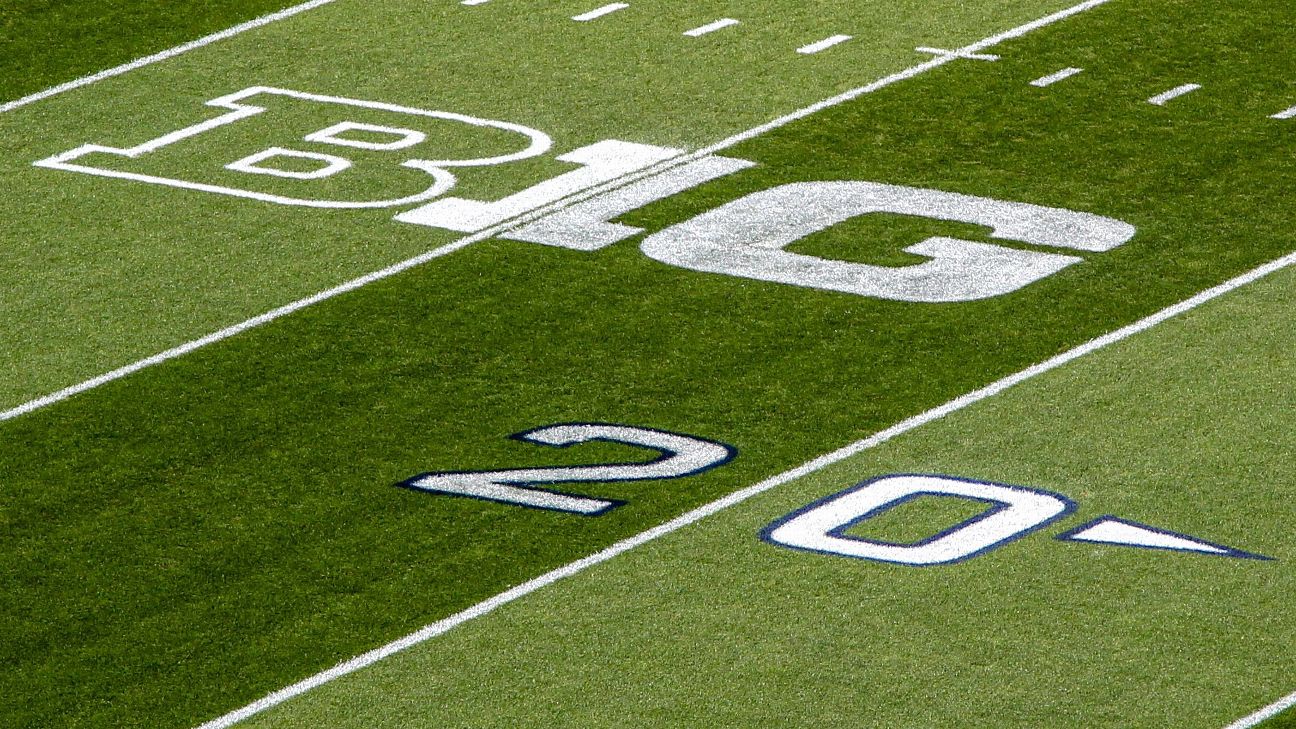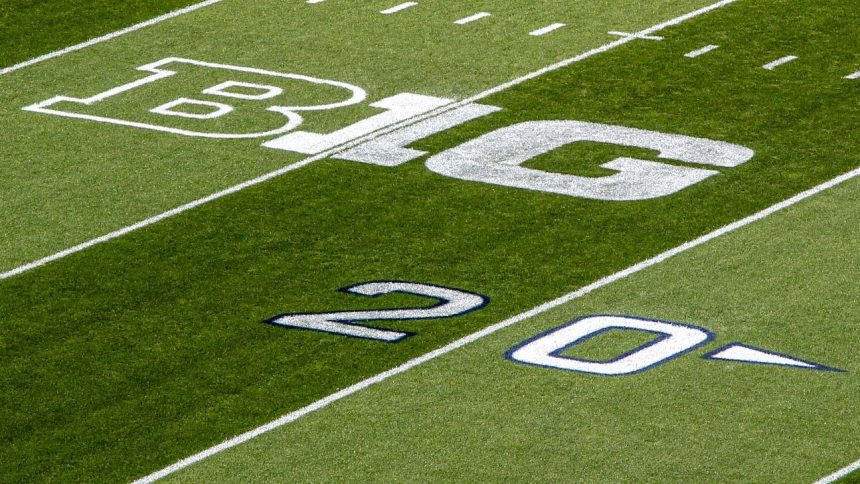
The Big Ten in 2024 will introduce a football schedule model that includes 11 protected matchups across the conference, eliminates divisions and targets a robust overall rotation as the league expands to 16 members with USC and UCLA.
The “Flex Protect Plus” model maintains a nine-game league schedule and contains both guaranteed annual matchups and rotating ones. Beginning in 2024, every conference pairing will take place at least twice in a four-year span, once at each member school’s home stadium.
The list of annual protected matchups, which features historic rivalries and trophy games, varies in number among Big Ten teams.
The protected games are: Michigan–Ohio State, UCLA-USC, Minnesota–Wisconsin, Indiana–Purdue, Michigan State-Michigan, Iowa-Minnesota, Illinois–Northwestern, Iowa-Nebraska, Maryland–Rutgers, Iowa-Wisconsin and Illinois-Purdue. The Big Ten on Thursday announced all opponents for the 2024 and 2025 seasons, although specific dates will be finalized later.
Teams also will have opponents they play in both 2024 and 2025 — called “two-plays” — that will change for the 2026-27 cycle. For example, USC and Penn State will play in both seasons, as will UCLA and Nebraska.
Big Ten chief operating officer Kerry Kenny told ESPN that overall flexibility became the biggest priority with the schedule model, which generated about a year of discussion. The conference considered models that included no protected annual games, or 1-3 protected games per school, before deciding that a varied approach could preserve the most important pairings and create the best rotation so players could compete in every stadium. According to Kenny, the Big Ten reviewed 171 versions within the Flex Protect Plus model.
“It’s done in two-year increments, so that allows you to be a little bit more responsive to competitive trends, responsive to changes in the postseason model,” Kenny said. “Look, we don’t know how the CFP committee is going to evaluate teams in this expanded playoff, but we’re pretty darn sure that this model that we’re putting forward and the depth of the games and the quality of games, that’s going to send a pretty strong and significant message.”
The division-less model will feature the top two teams competing in the Big Ten championship game. Tiebreaker specifics will be announced at a later date. Since the Big Ten implemented the East and West divisions in 2014, the East division winner has won every conference title.
Kenny said that although divisions had advantages, they also limited the frequency of compelling matchups. Under the current division model, Indiana-Purdue is the only protected annual cross-division matchup. Kenny said the Nebraska-Michigan series, in which Michigan visited Nebraska in 2012 but did not go back until 2021, often came up in discussions.
“That’s a nine-year gap for two historically competitive, some of the winningest programs in the history of the sport, and Michigan fans and Nebraska fans only got to experience that game in Lincoln twice since Nebraska joined the league,” he said. “So competitive is important and postseason access and TV, but it comes down to asking the question: ‘What makes us a conference? What makes us feel like we’re really tied together in a meaningful way?’
“Playing each other more and not less has some impact.”
When examining different schedule models, the Big Ten asked its schools to list the most important matchups — historic rivalries, regional games, trophy games — they would want protected annually in a nondivision format. The schools then were asked about their “nonnegotiables,” Kenny said, as well as games they would like to play frequently but not annually.
Iowa, which first played both Minnesota and Wisconsin in the late 1890s, preserved both games, along with Nebraska, a regional series that has been played the day after Thanksgiving since Nebraska joined the Big Ten.
Penn State, meanwhile, has zero annual protected opponents in the new model. The Penn State-Ohio State game has often shaped the league and CFP races, but it will not be played in 2025 after taking place at Beaver Stadium in 2024.
“The more protected matchups you’ve included in the model, the less flexibility you had to create a really balanced model for everybody,” Kenny said. “So 11 was where we capped it. Penn State doesn’t have any protected matchups, but they see more teams three out of four years, the way that the model will be built moving forward, that might be a little more geographic to them.”
USC’s initial Big Ten schedule in 2024 will feature Illinois, Iowa, Michigan and Wisconsin at home, and Maryland, Northwestern, Penn State, Purdue and UCLA on the road. UCLA’s first Big Ten slate has Minnesota, Nebraska, Northwestern, Ohio State and USC at home, and Indiana, Iowa, Michigan and Rutgers on the road.
Both newcomers will play every Big Ten school at least once by the end of the 2025 season, and every existing Big Ten team will play at either UCLA or USC during the same span. Kenny said increased travel and a third time zone factored into the 2024 and 2025 opponents, as did avoiding repeat sites from the 2023 schedule and maintaining the alternating five-four split — five league home games one year, four league home games the next.
“We needed to make sure that we did a good job of balancing not having really extreme travel distances for them, of one school having to go to their five furthest possible opponents in Year 1,” Kenny said. “You have to balance Eastern time zone schools, Central time zone schools.”
Michigan’s 2024 trip to USC will mark its first since 1958. USC will visit Penn State for the first time since 1994.
UCLA will visit Michigan Stadium for the first time since 1996 and will host Ohio State for the first time since 2001.
The Big Ten first introduced divisions in 2011, when Nebraska joined the league as its 12th member. The initial divisions, named Legends and Leaders, were formed to achieve competitive balance based on team performance data. Certain annual rivalries were sacrificed, including Wisconsin-Iowa.
But the division names drew widespread mockery, and the league scrapped them in 2013 and then went with the geographic designations, which began when Maryland and Rutgers entered the league in 2014.










